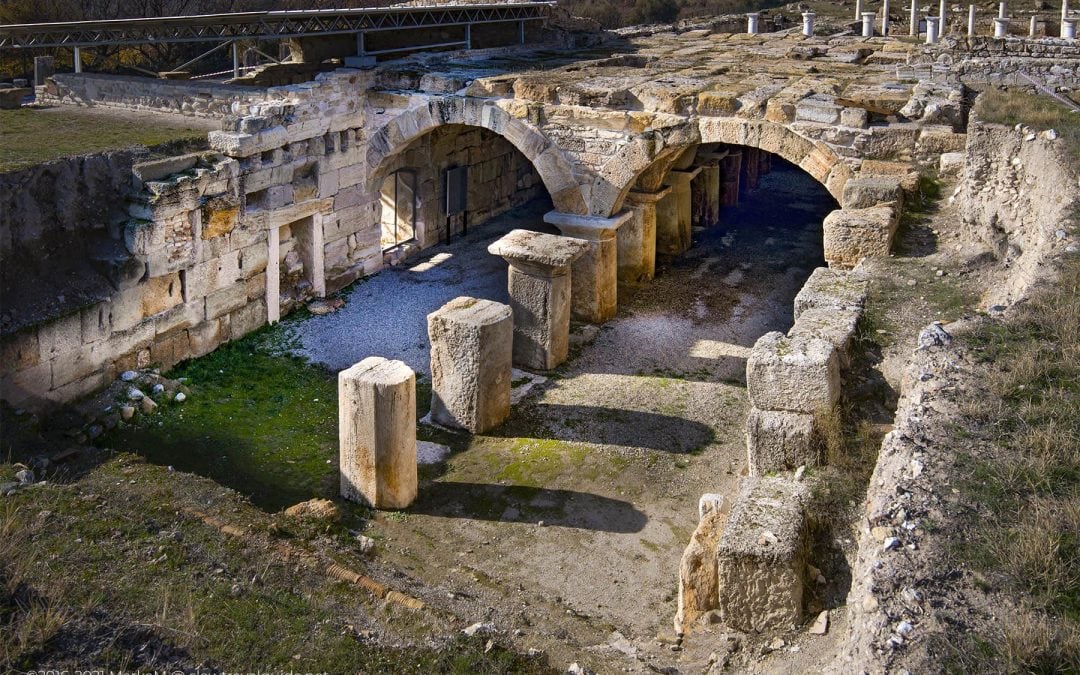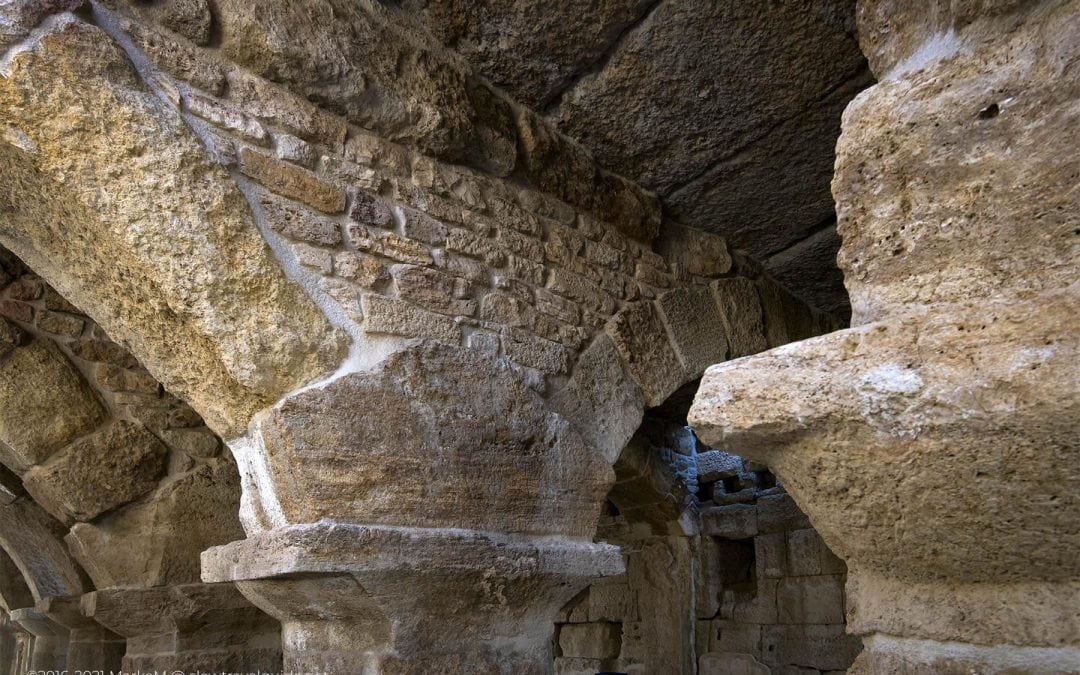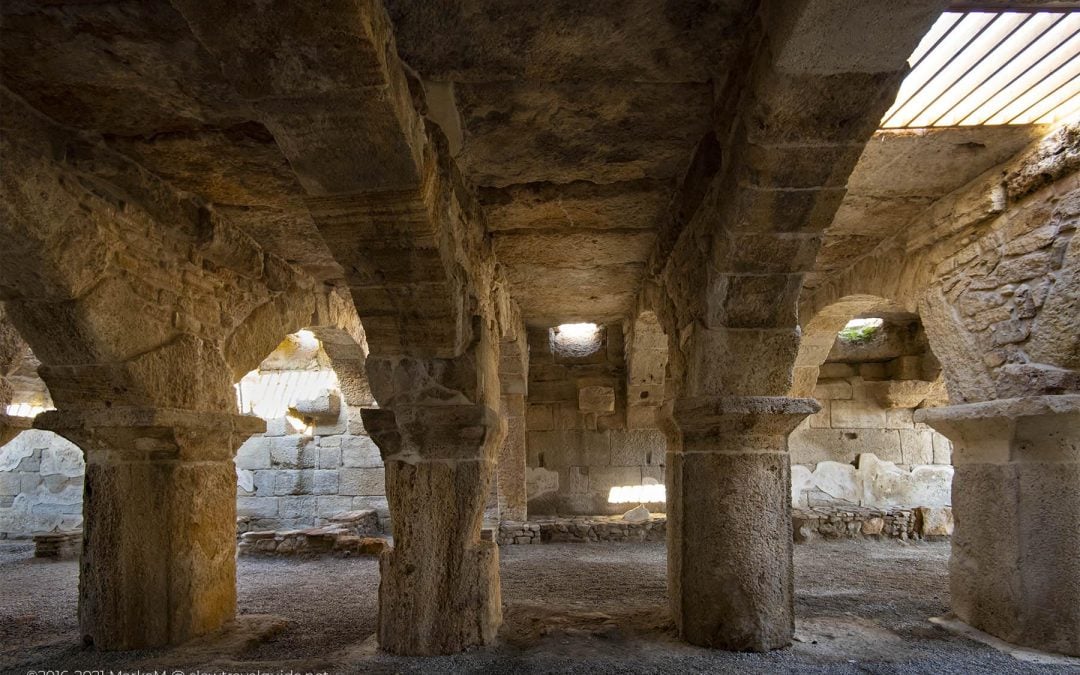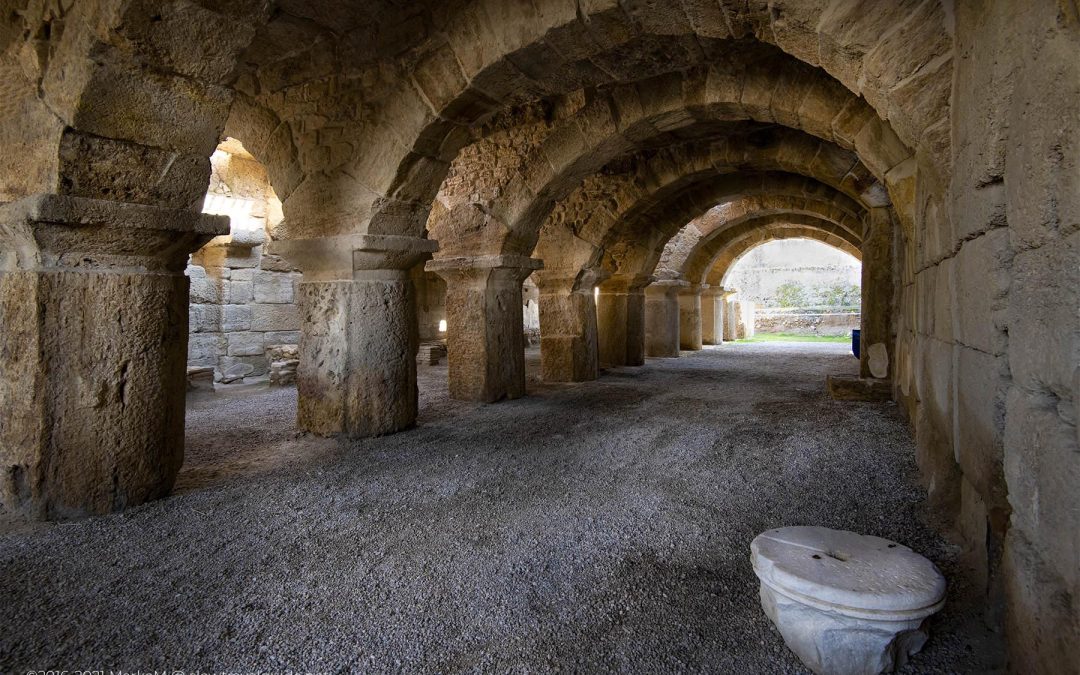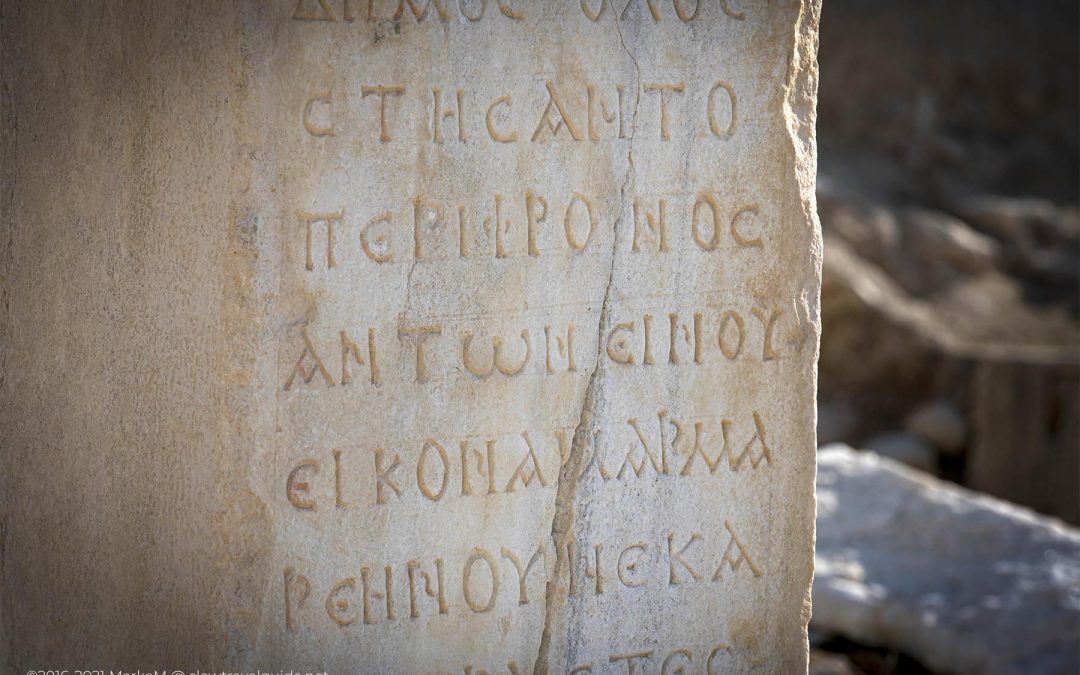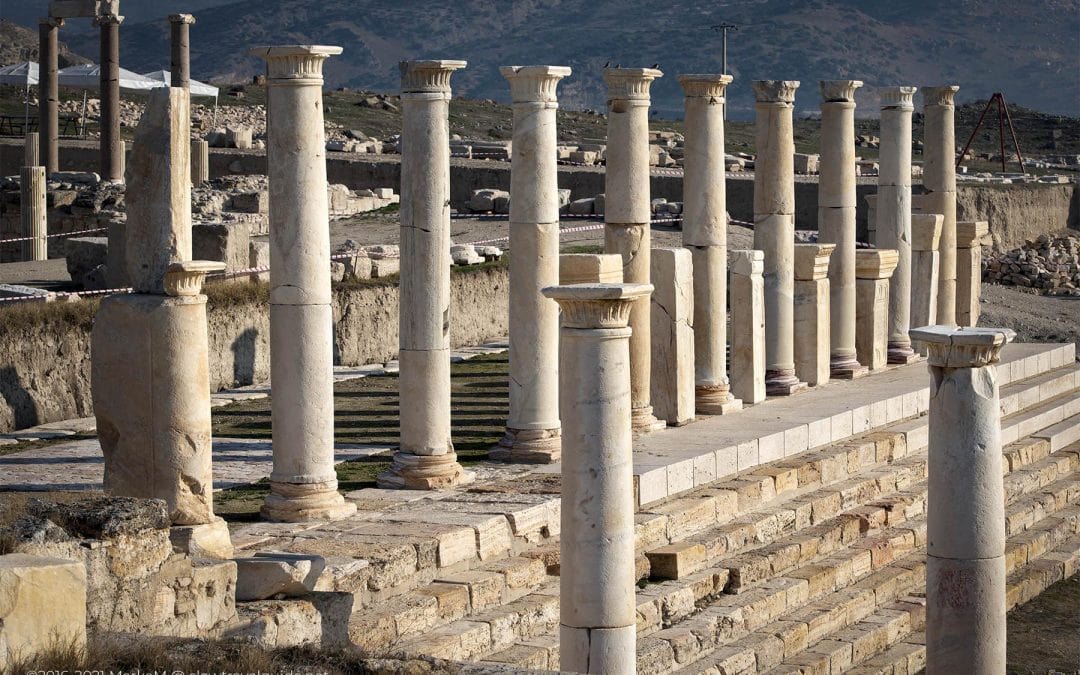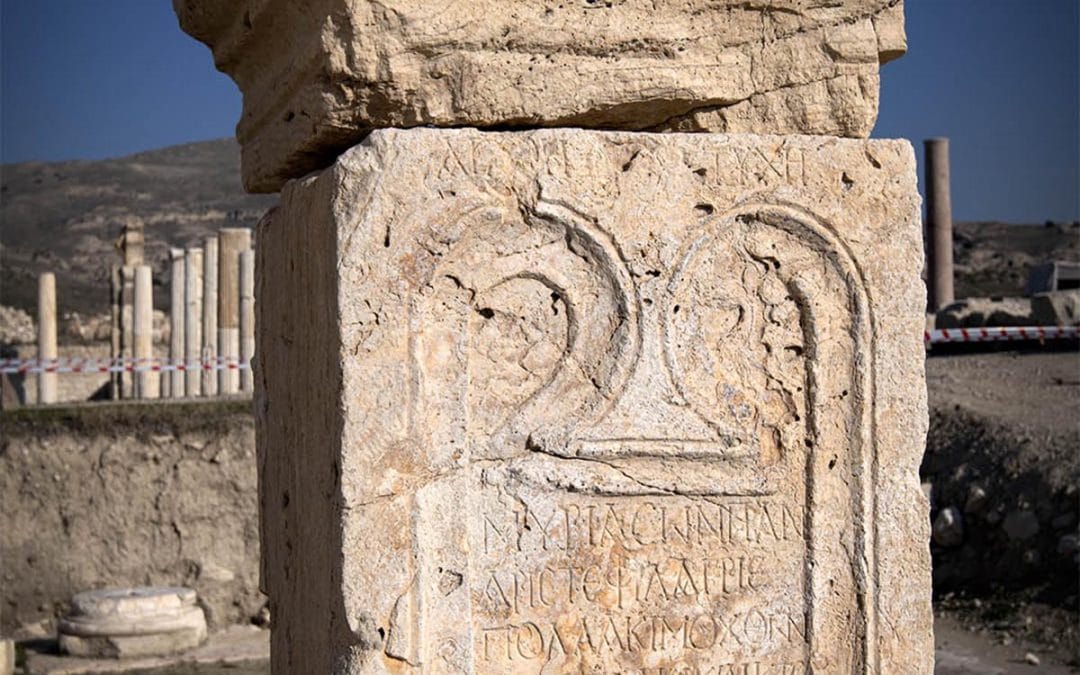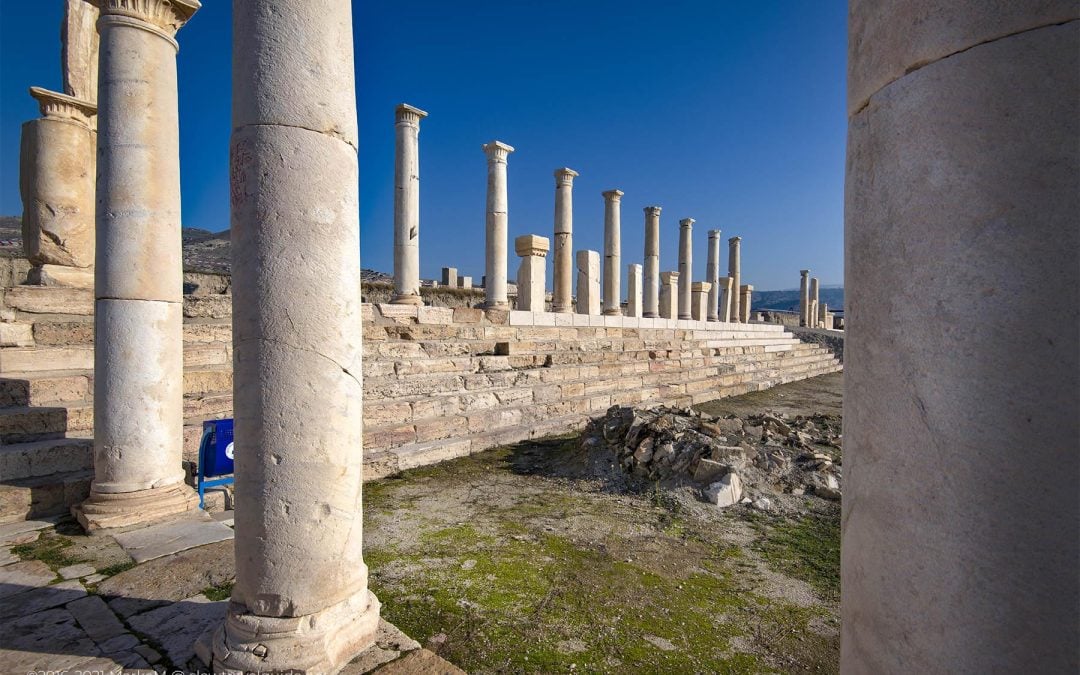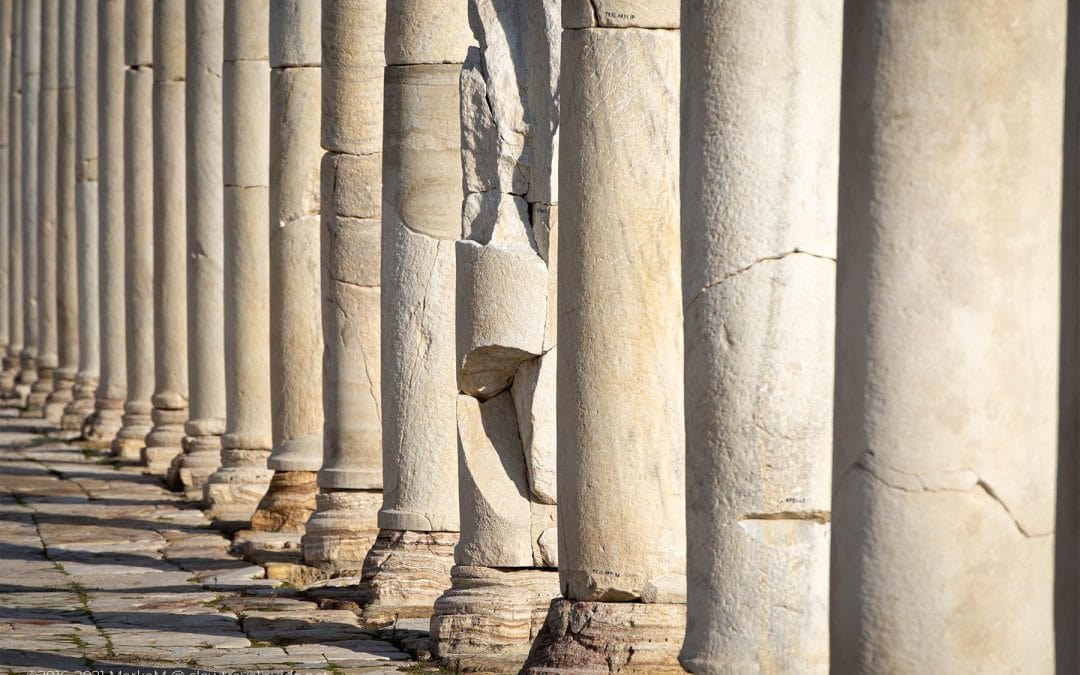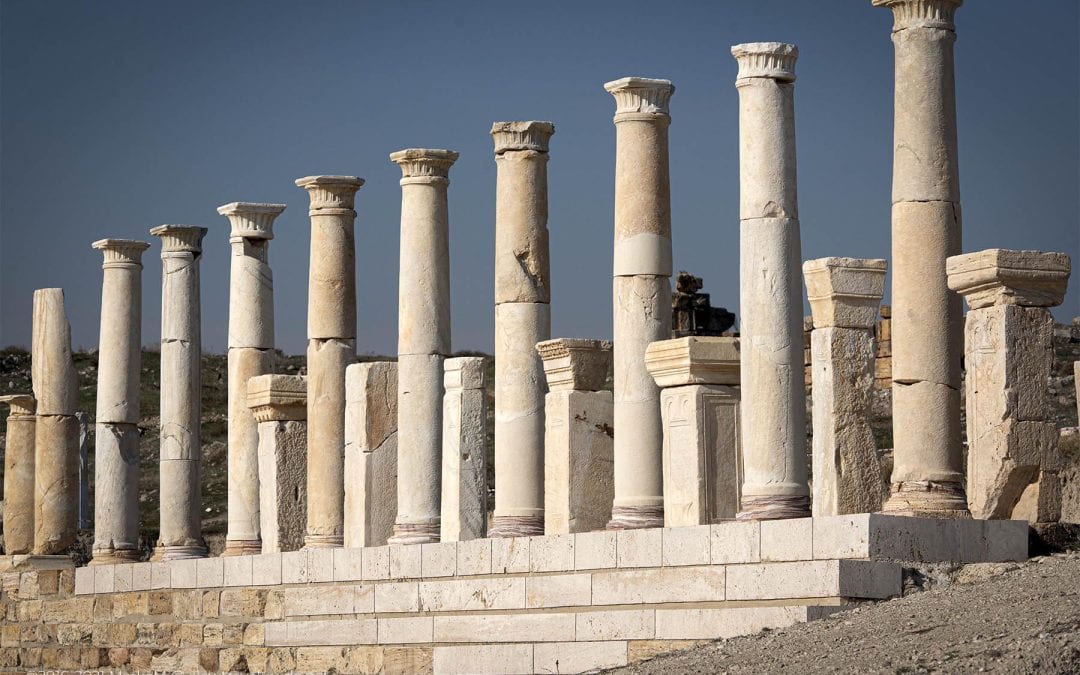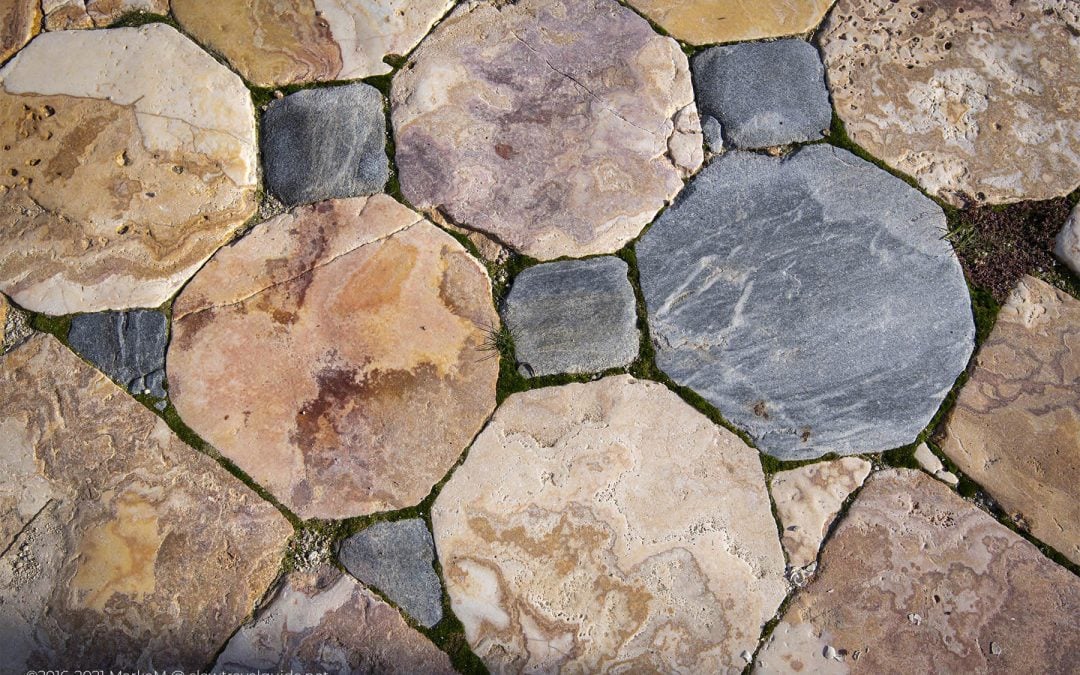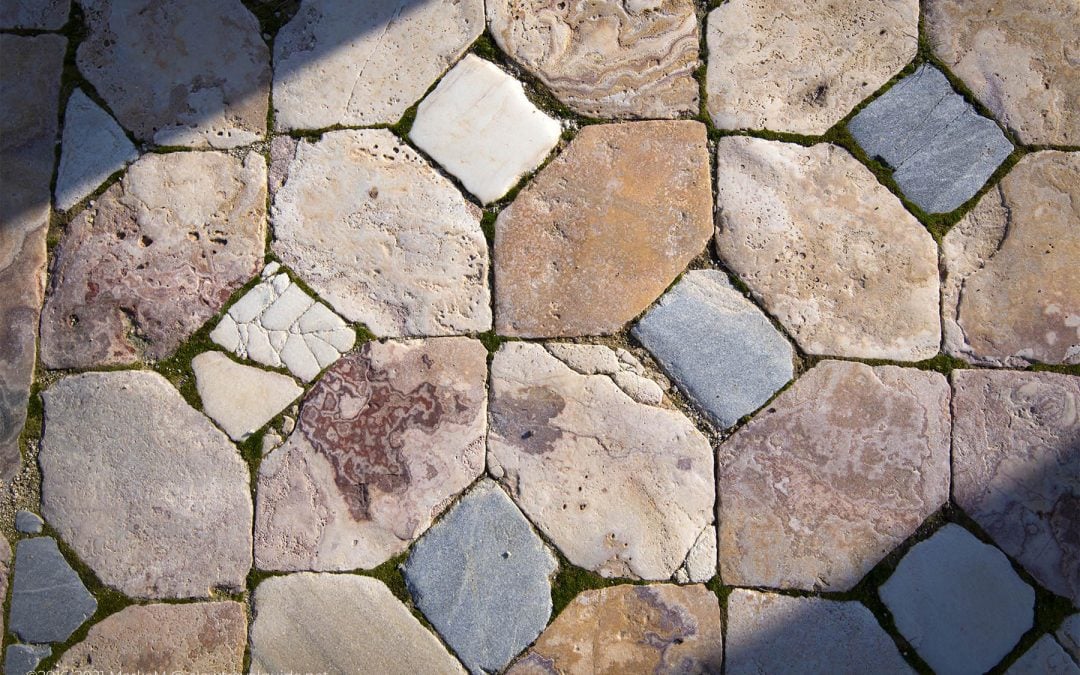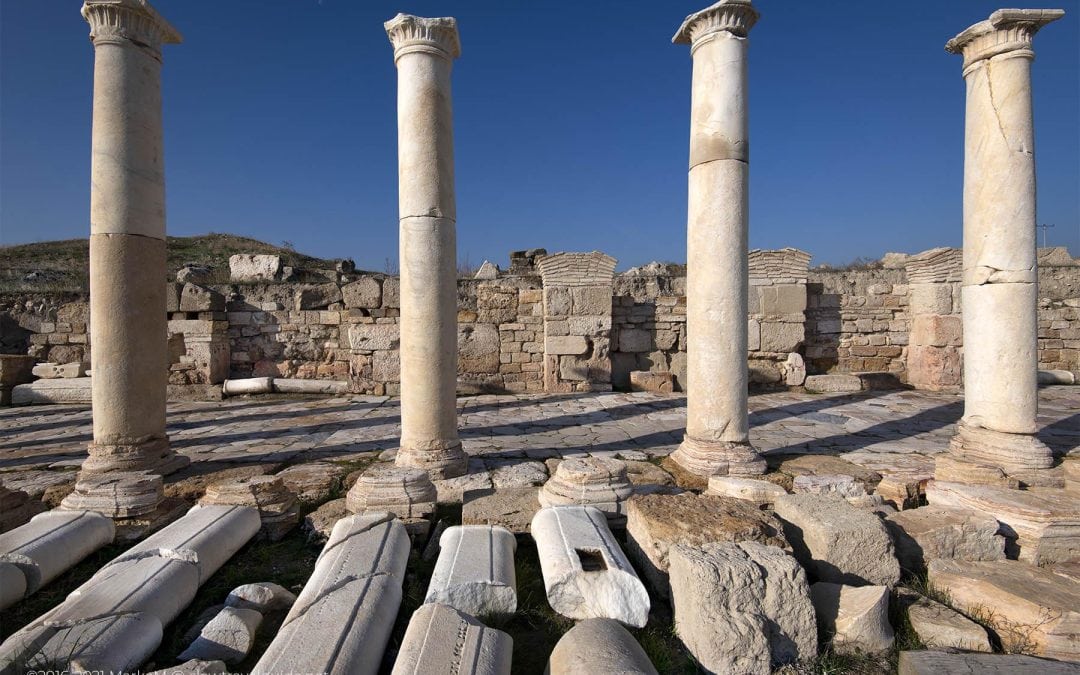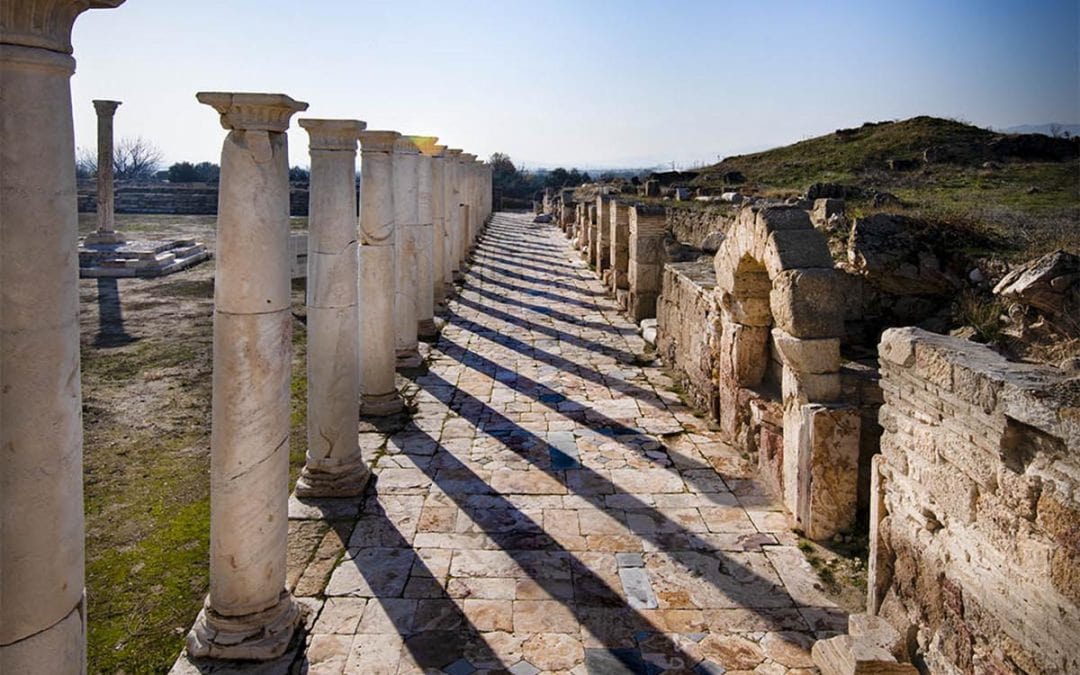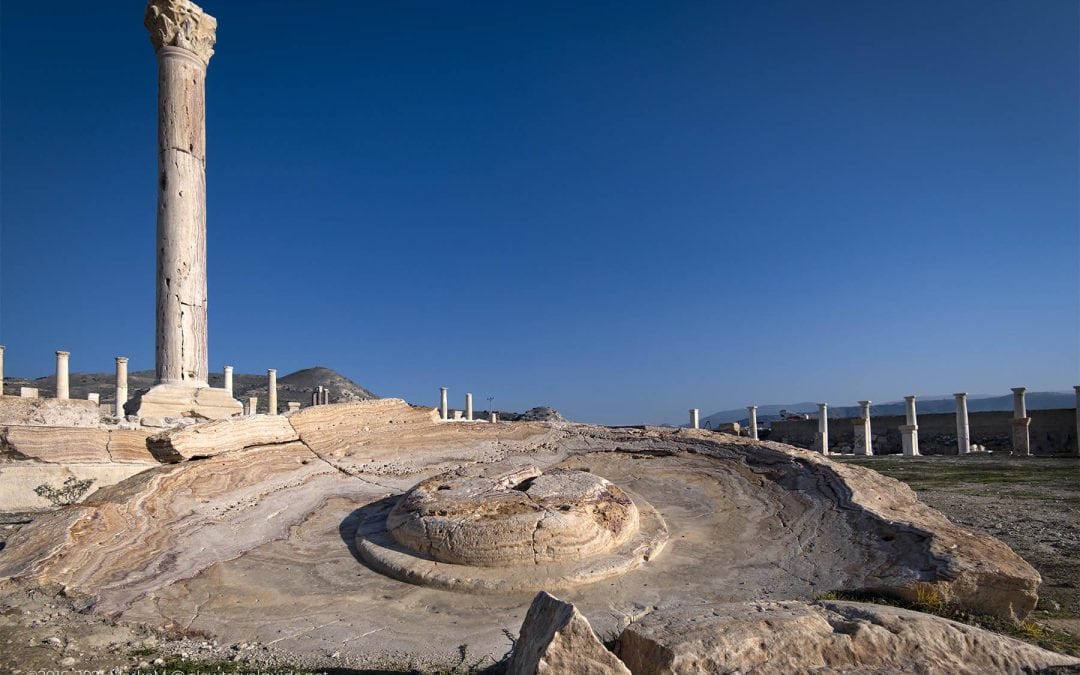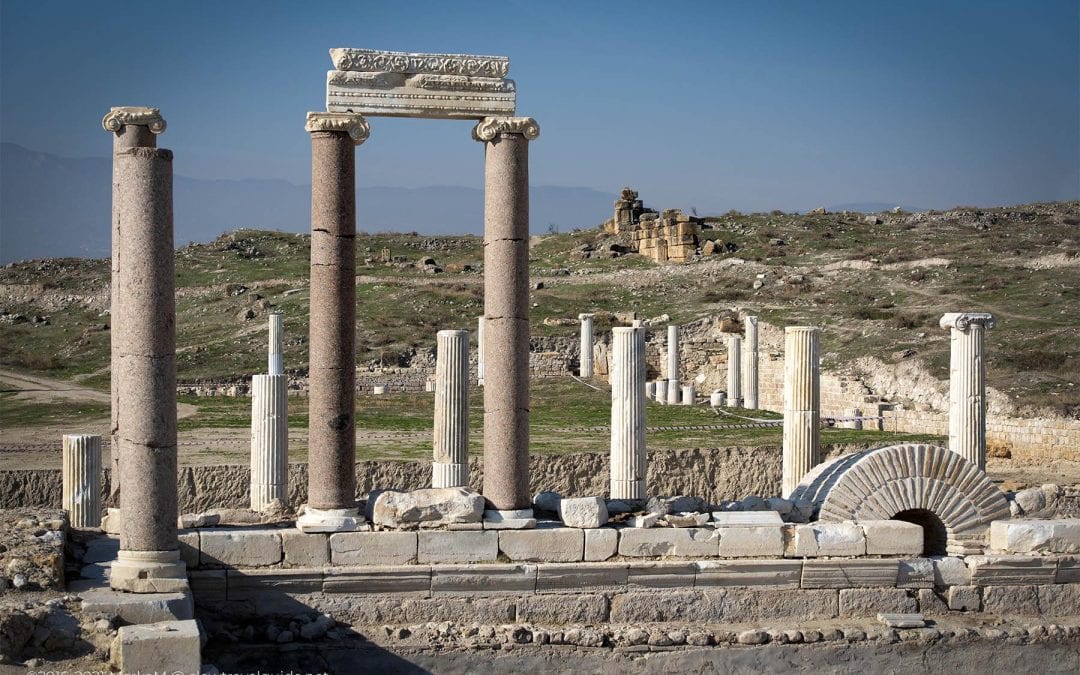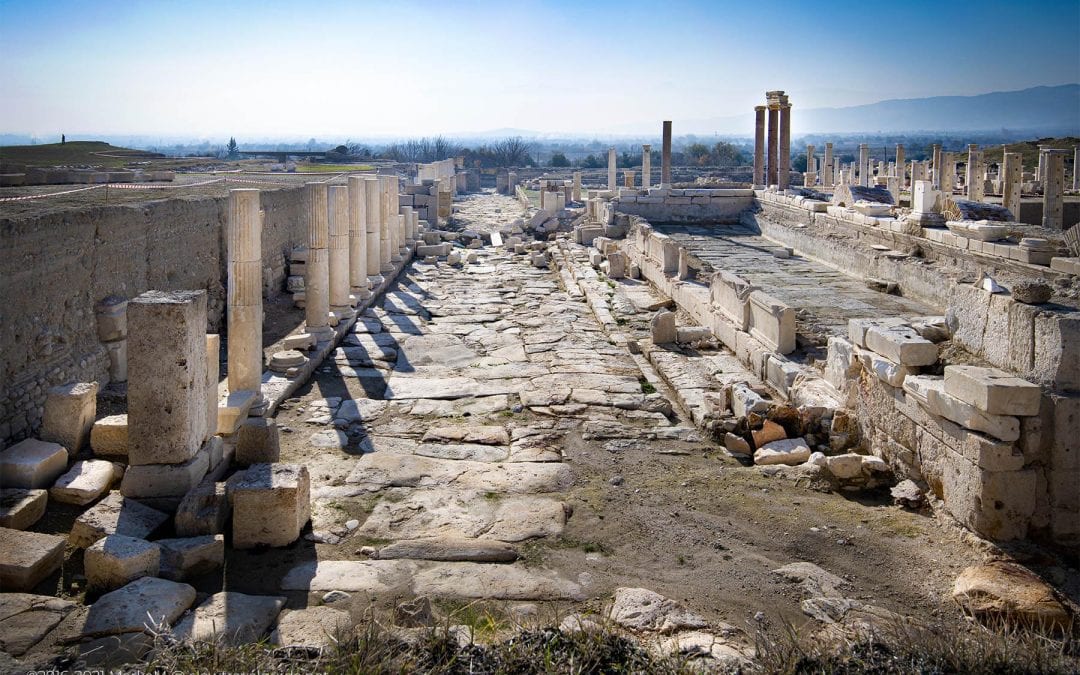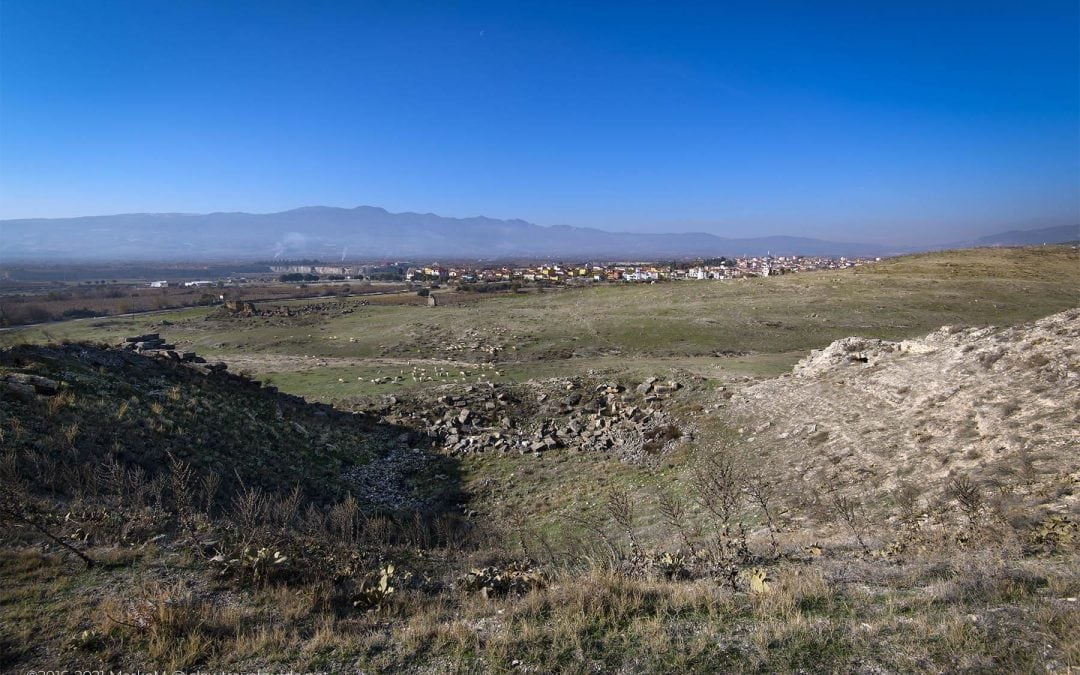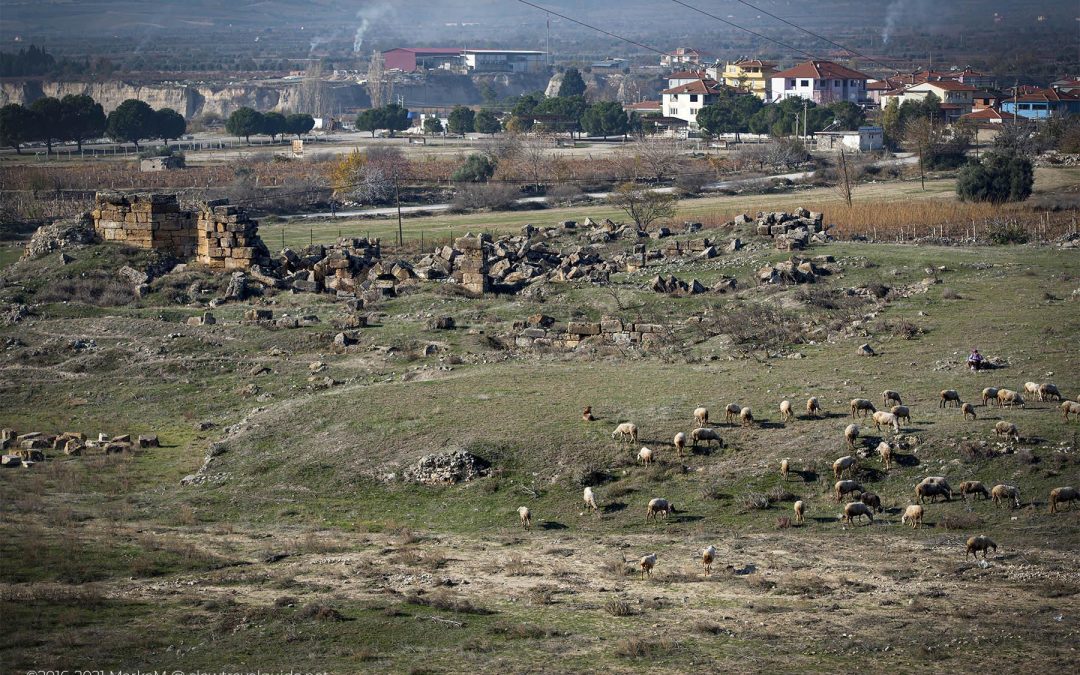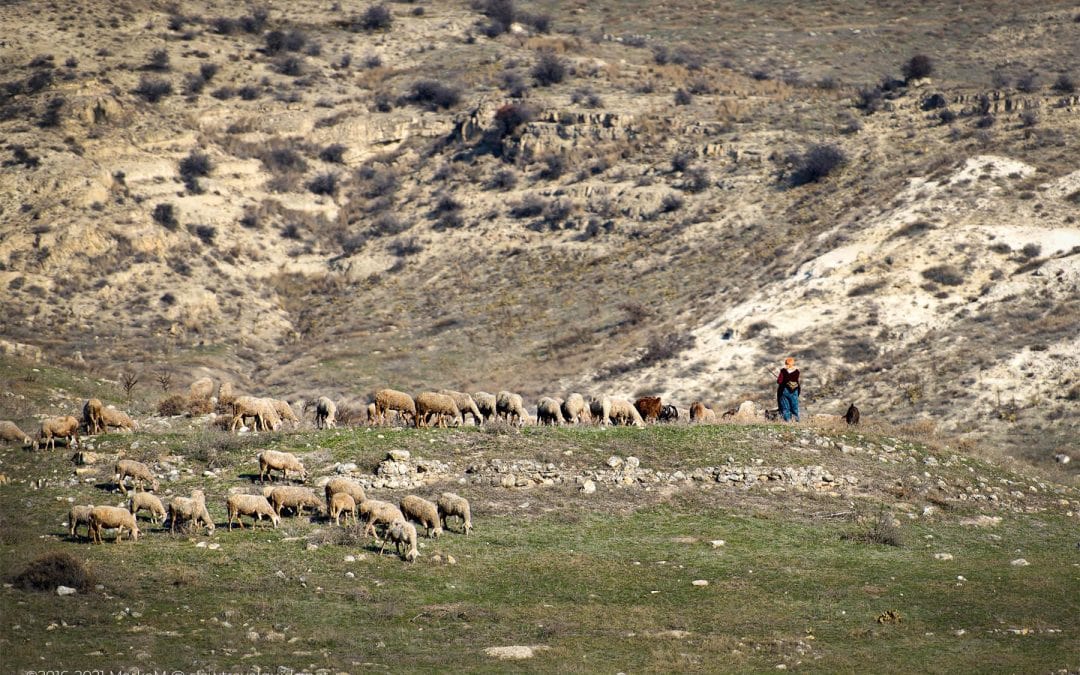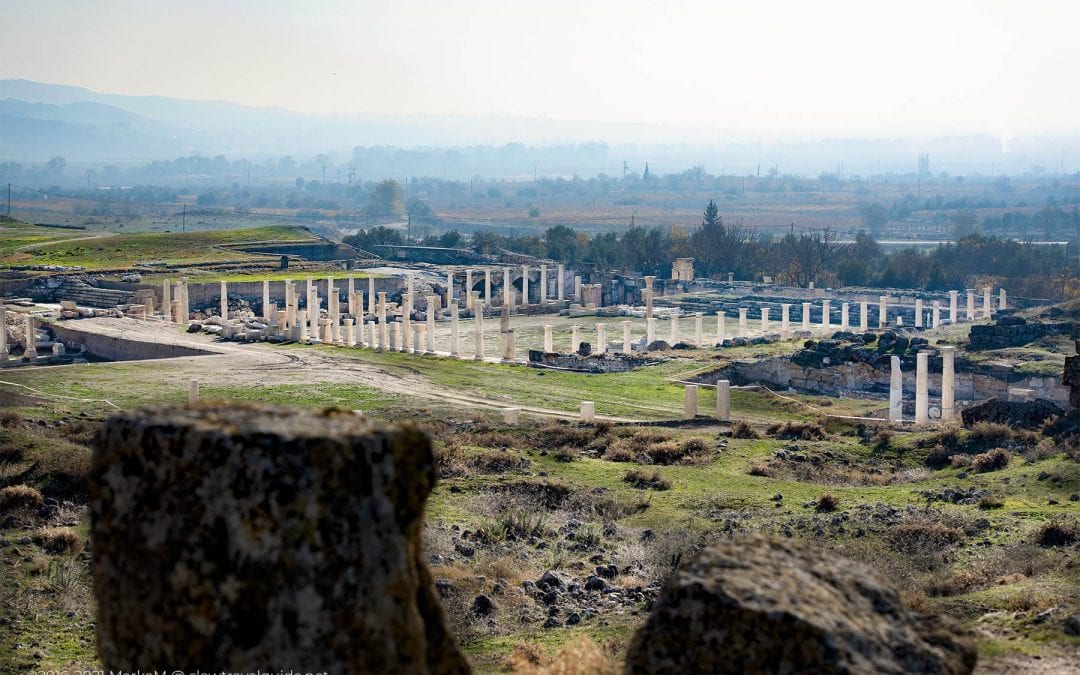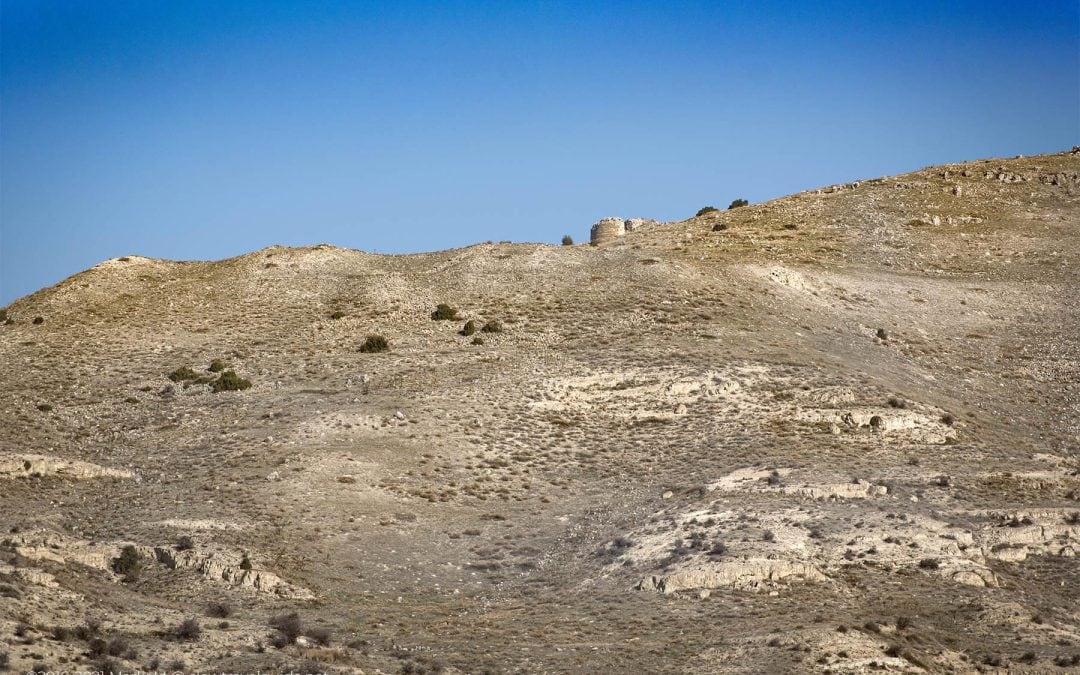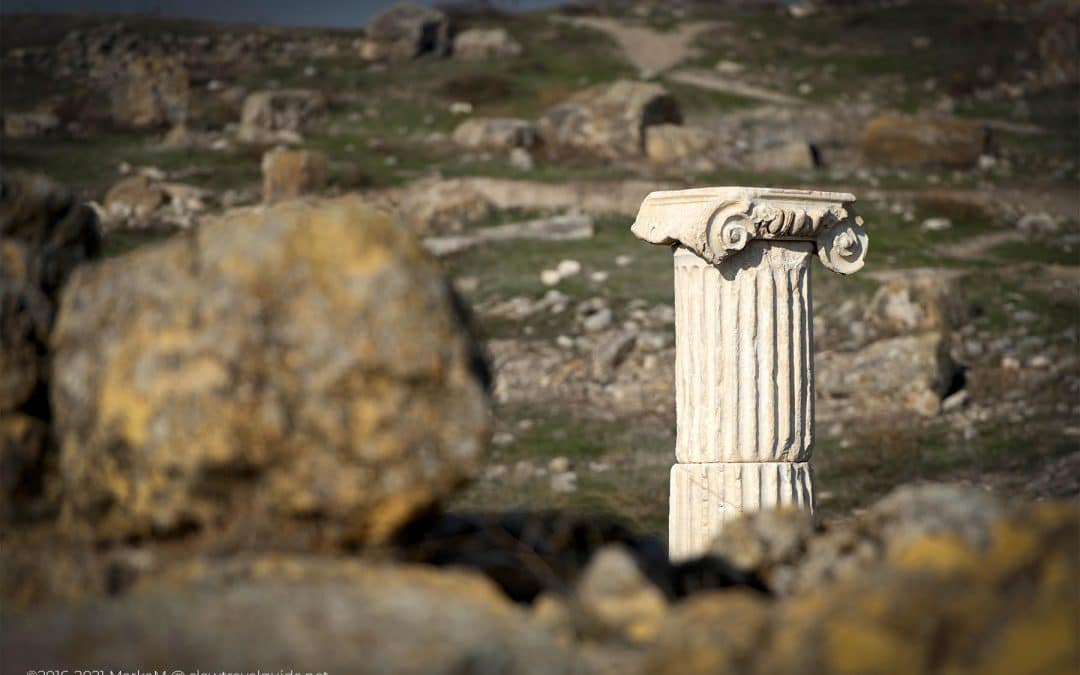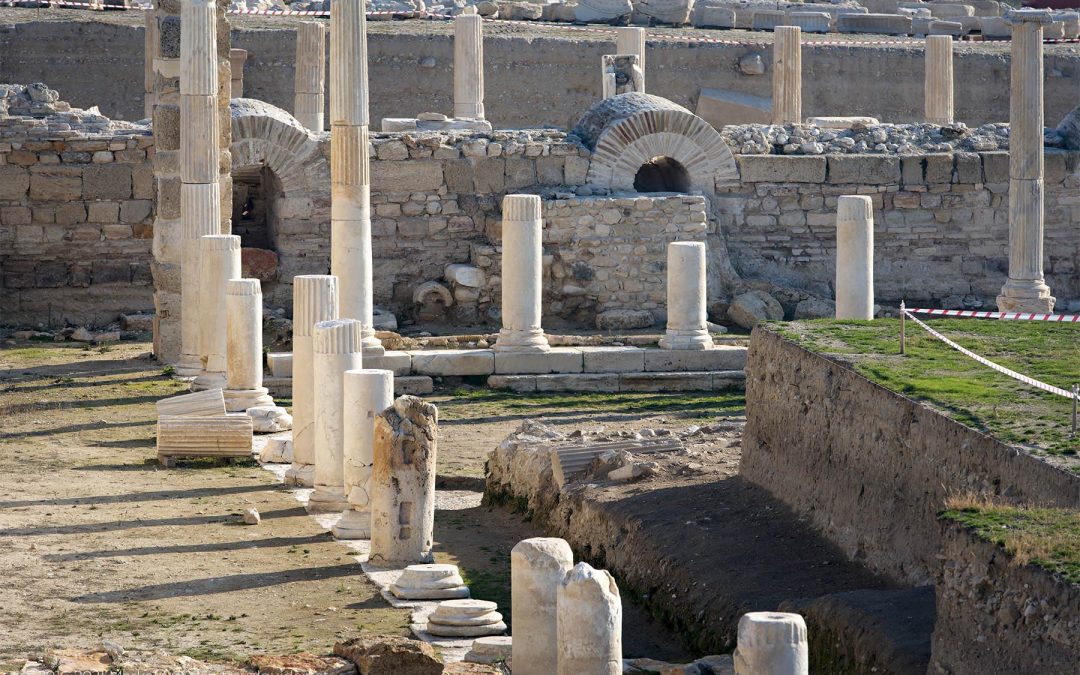Tripolis
And Its Fascinating Agora
By Slowtravelguide
Tripolis sounds attractive enough to us. The name is enough to inspire curiosity and to make you want to take a closer look at the site, but for this place, a single name is not enough.
It is also called Neapolis, Apollonia and Antoniopolis.
No matter which name you like, this ancient site near Pamukkale is beautiful, and it is worth adding to your itinerary if you are in the neighbourhood.
Tripolis is an excavation site; archaeologists regularly make discoveries, it is an exciting place to revisit from time to time. Check out Tripolis on the Meander in this article.
About Tripolis
The official archaeological project website states that Tripolis can be traced back to 4,000 BC. In the Hellenistic period, the city was located on the borders of Phrygia, Caria, and Lydia. Most of the ruins as you see today, originated in the Roman and Byzantine periods, which was the most exciting period of the city.
Most public buildings, the city gates, streets, baths, stadiums, theatres, and parliament halls, were built after the second century.
A 1,500-year-old church was discovered in 2013, and in 2019, excavation work uncovered a 2nd-century fountain.
The city made its own coins, some of which have the image of Leto. Today, you will find Tripolis near Yenicekent and Buldan in Denizli Province.
Strolling In Tripolis
There are two official walking routes in Tripolis. The shortest route will take you past all the excavated and restored landmarks of the site, whilst the long way will give you an idea of the size of the city and the unexcavated theatres and stadiums.
This article focuses on the excavated parts of the city because most of the unexcavated structures are still hidden.
The Mosaic House
Just after the car park, before entering the actual site, you will see the mosaic house.
Mosaic houses were built between the late Hellenistic and late Roman periods. There are two rooms with mosaic floors. They were the living area of the house. They were used throughout the 5th century.
Around the corner, you enter the Colonnade street, with Shops, at the intersection of Hierapolis Street, stand the remains of the Nymphaeum. The dimensions of the fountain are 2.1 x 5 m, and its remnants undoubtedly left their mark here.
The Agora And The Arched Building
Behind the colonnade sits the Agora, which can be accessed through 2 different entrances. The first gate will take you to the side of the Agora, where you can find an arched building.
The arched building is very small, hiding some interesting but severely damaged murals. You cannot enter the building, but you can take a look from the entrance.
There is evidence that this place was also used as a tomb.
The arched building itself is spectacular, consisting of 15 arches, one side resting on a pillar in the centre of the building. There are workshops on one side of the building and storage facilities on the other.
The arched building, or Cryptoportico, was built in the late Hellenistic and early Roman periods, and had a second time of use in the 4th century.
The Impressive Arched Building
Cart Tracks At Tripolis
When entering the arched building, notice the impressive trolley track erosion, left on the pavement at the gate of Hierapolis Street gate.
The Agora
Time to get impressed by the markets in Tripolis. The Agora has a total area of 2.800 square metres and an internal area of approximately 50 x 56 metres.
You will find a stepped platform on the north and south sides and a Stoa on the west side.
The Agora was constructed at the end of the 4th century and the beginning of the 5th century by remodelling the existing Agora during the Augustus period.
What To Expect
How To Get There: Private, rental car (check the map below) or public transport (take the Buldan minibus (dolmuş) from Denizli bus station).
Nearest Airport: Denizli Çardak Airport.
Parking: Yes.
Terrain: Easy.
Stroller: Yes.
Income: Free (check before you visit).
Facilities: No.
Best Time To Visit: All year, depending on the weather.
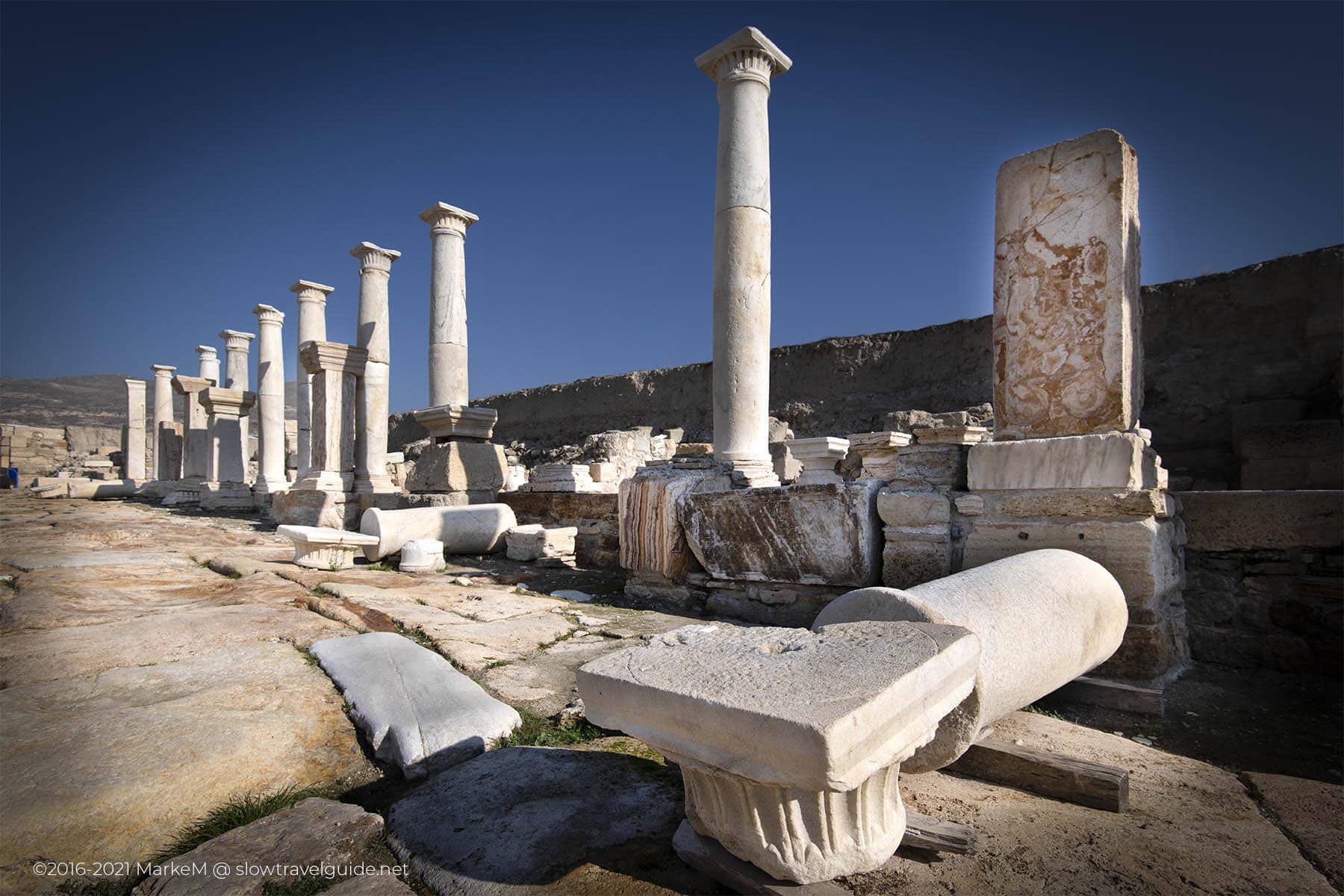
Columns Standing Proudly At Tripolis Agora
A Winter Day In Tripolis
Beautifully Restored Portico At Tripolis’ Agora
The 5-meter wide Portico has an amazing opus sectile floor, mainly onyx tiles. stands In the centre of the Agora sits the Honorary Column, destroyed in the earthquake.
The restoration of Agora was completed in 2018 and shows Tripoli’s past glory perfectly.
The Restored Agora At Tripolis
Excavations Area In Tripolis
Near the Agora, archaeologists discovered a 2nd century fountain during excavations in 2019. The U-shaped fountain is 7 metres wide and 32 metres long, and is well preserved. You can admire the excavation area from above, close to the base of the archaeological team.
Columns Of All Colors And Sizes
Tripolis Theatre
The Tripolis Theatre is located on a long route, right next to the theatre baths. It is not yet explored, but walking to the area can give you a good understanding of the site and its surroundings. The shepherds used the cemetery as a grazing area for their sheep, and further up, the fortress could see a wider view.
On the way to the fortress, you will pass the unexcavated stadium and the remains of the city wall. The best place to view the theatre is from the road leading to the site, although the unique horseshoe shape can also be clearly seen from above.
As we mentioned in the introduction, Tripolis is an active excavation site.
This heralds more discoveries in the future, but it also means that not all areas are accessible.
Visiting Tripolis will give you an in-depth understanding of the methodology of archaeologists and living proof that if you want to discover the glory of a forgotten era, you need to undertake a lot of excavation work.
Tripolis In A Nutshell
Practical Information
The short hike takes less than an hour but, if you step on it, it may only take half an hour. Therefore, even if your schedule is tight, you can make it fit into your itinerary.
This ancient city is worth a visit and is free, even if some places are restricted.
If you have any questions about a place, feel free to ask. You can send us a message through our contact page or leave a comment on our Instagram or Facebook pages.
You can also join our group Turkey Travel Photography on Facebook to share your lovely photos or experiences about Turkey.
Different Kinds Of Marble Were Used At Tripolis Ancient Site
Places We Recommend
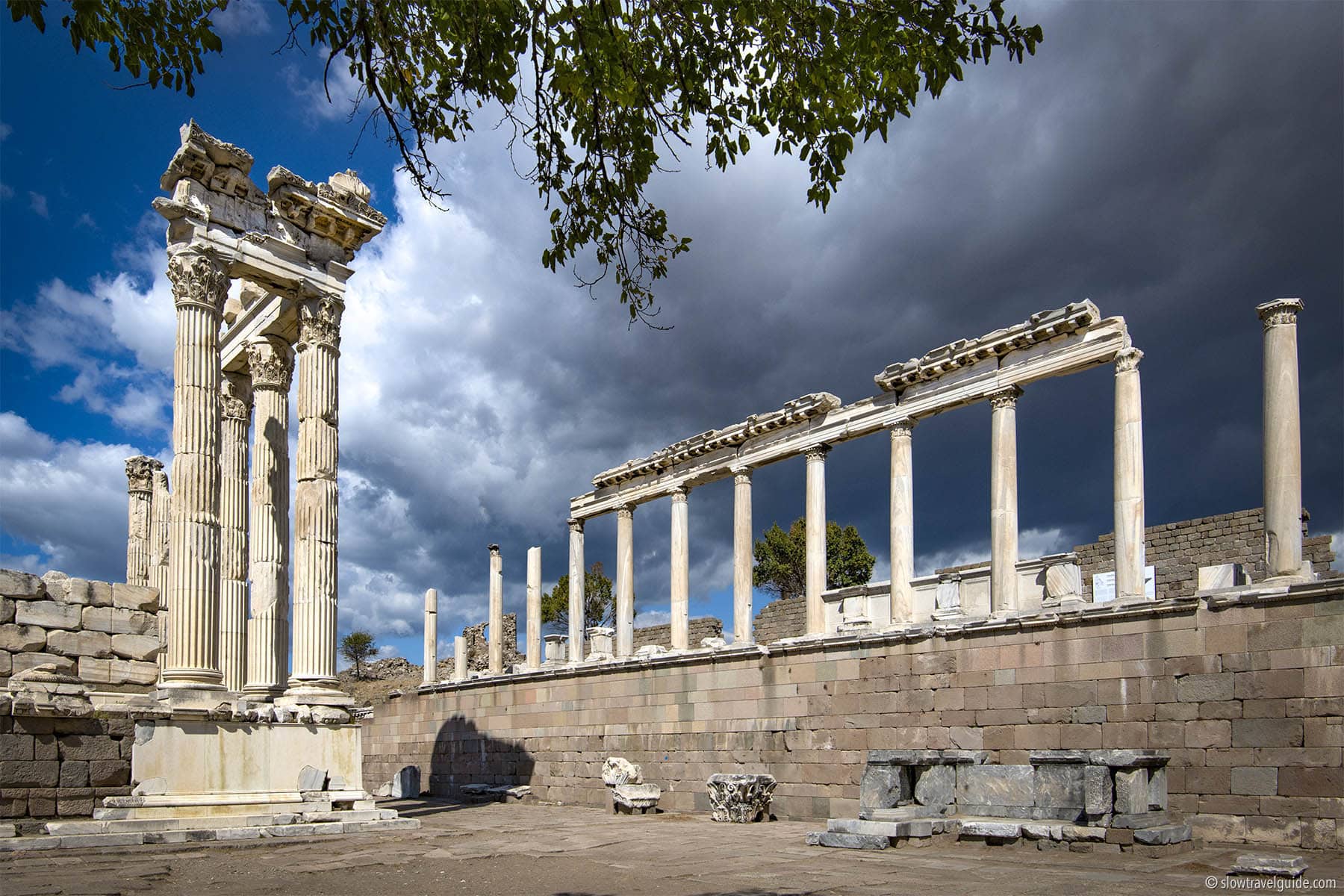
Pergamon
Theatre and three-terraced gymnasium are perfect examples of how existing natural rules can be integrated into urban planning. (Coming soon)
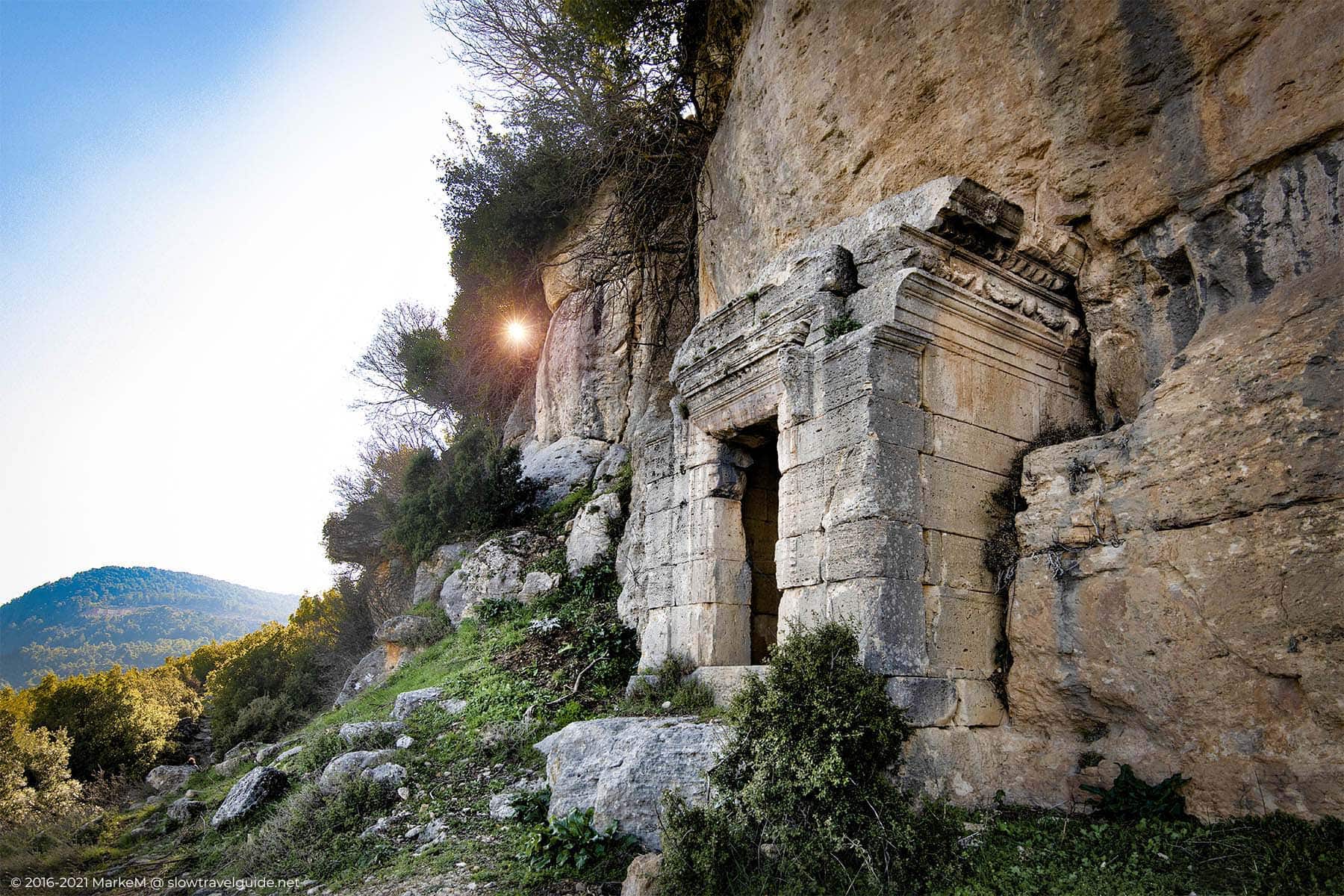
Kremna
Sometimes explaining an ancient site’s name is not easy, but Kremna’s case is straightforward. A visit to the site will clarify why Kremna is the ancient Greek for Cliff. (Read more)
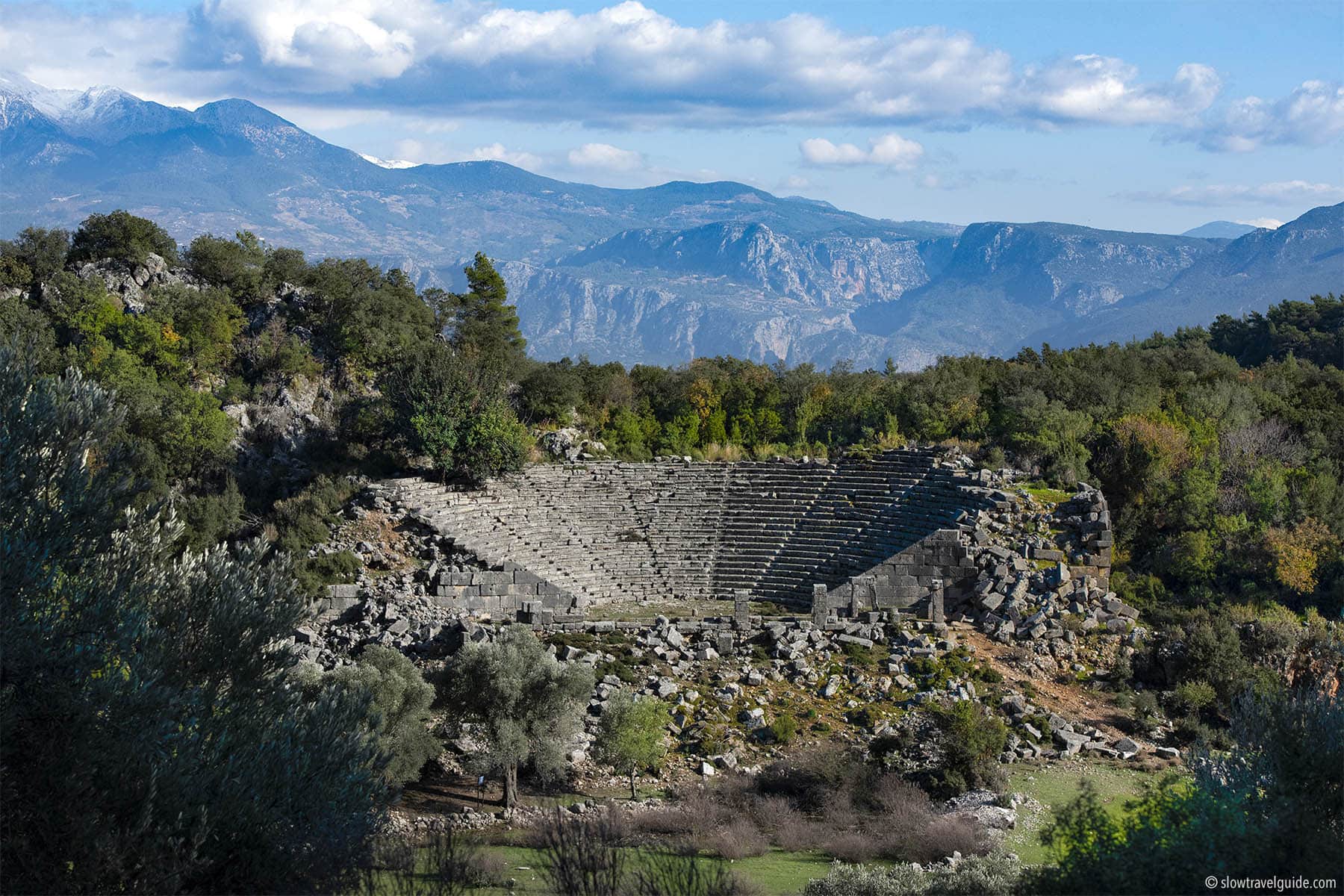
Pınara
When visiting Pinara, the words that come to mind are untouched, undiscovered, mysterious and serene. Another off the beaten track destination is often overlooked when visiting nearby Xanthos. (Coming soon)
© 2016-2022 All rights reserved by slowtravelguide.net.
The content of this website is copyright protected and the property of slowtravelguide.net.No part of this website may be reproduced in whole or in part in any manner without the written permission of the copyright owner.
Copyright ©2016-2022 Tüm hakları saklıdır. Bu (slowtravelguide.net.) web sitesinin içeriği koruma altındadır ve slowtravelguide.net.Buradaki hiçbir içerik (yazı,fotoğraf,video vb.) izinsiz olarak kopyalanamaz, alıntı yapılamaz,başka yerde yayınlanamaz.

